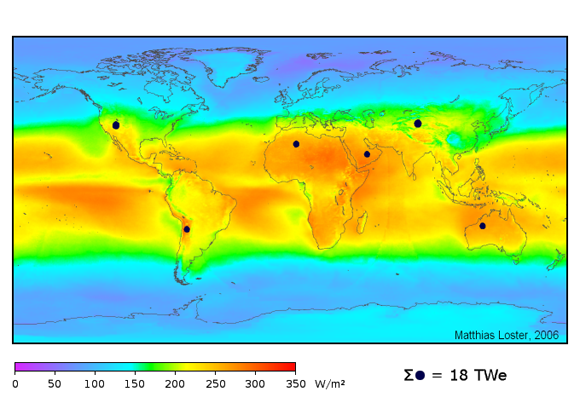Solar Power
Imagine if you could charge all of your digital gizmos with just the energy from the Sun. Maybe someday solar energy will power all our cameras and phones, much like solar calculators that run off the energy from the Sun without being plugged in to anything. Because the Sun shines everywhere, it is completely free and renewable. It can be used on a small scale (pocket calculators) or on a large scale (houses, even towns).
Click the tabs to learn about energy from the Sun.
|

Every year, enough solar radiation reaches the Earth to provide about twice as much energy as will ever be obtained by all of Earth’s non-renewable energy sources (fossil fuels and nuclear power) combined. Insolation, which is a measure of the amount of solar radiation that reaches a given area, varies throughout the world. It is highest near the equator and lowest near the poles. This is because Earth is tilted on its axis. The poles are tilted away from the sun during various times of the year. The equator gets more direct sunlight.
|
| Next » |
|

Insolation also varies by season, time of day, and weather conditions. This map shows average global insolation values. Note how values are highest (orange and red) near the equator. The small black dots indicate the amount of land area necessary to replace the total world energy demand with solar electricity. That is, all the energy that people demand now (in heat, electricity, fossil fuels, etc.), could be met by solar energy in the areas the size of those dots. Variations in insolation in different areas of the world do not necessarily mean that solar energy is limited to only certain climates. As long as there is sunshine, solar energy can be used. However, some areas are better suited than others.
|
| « Previous |
© KC Distance Learning. All rights reserved.

